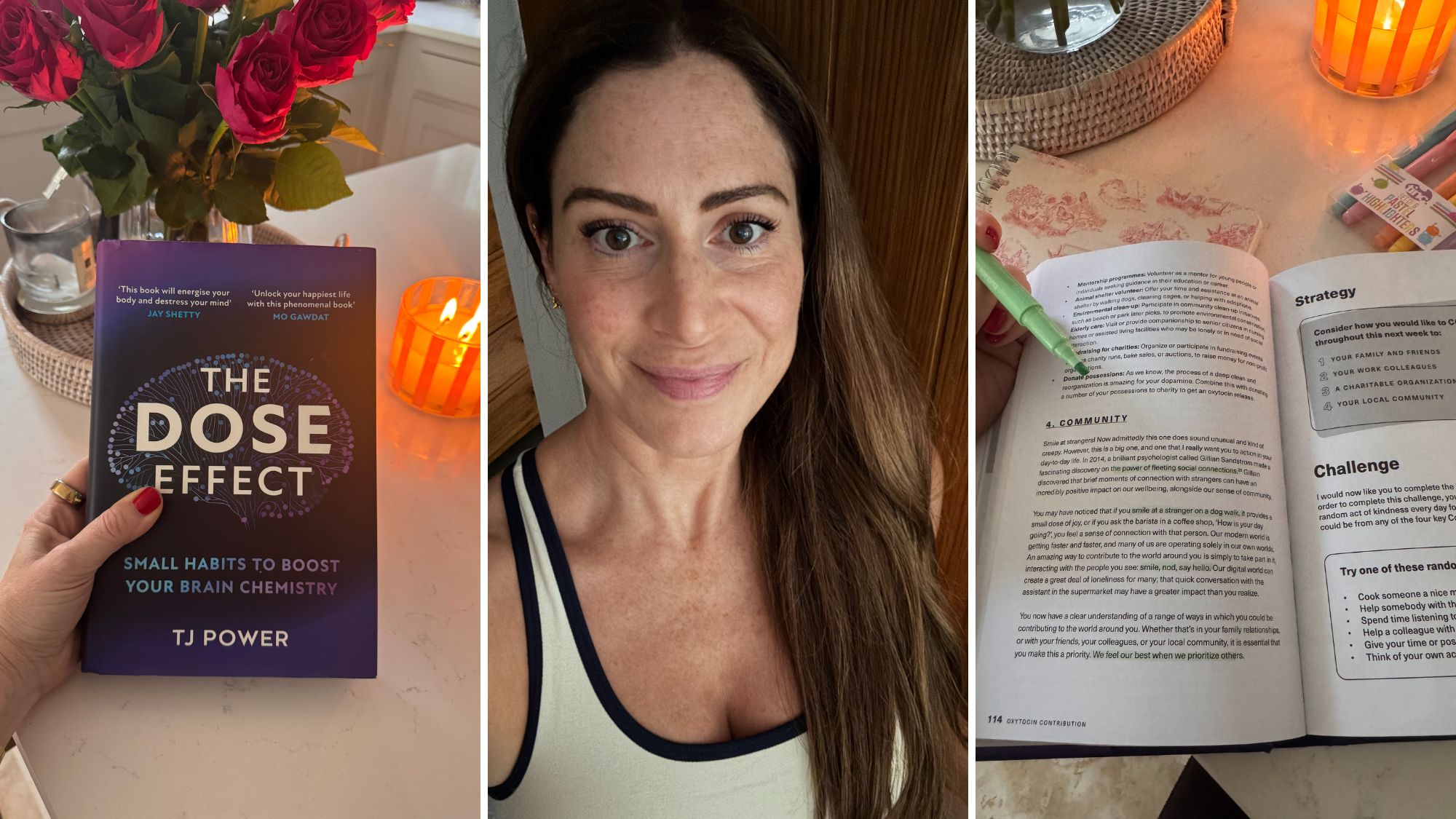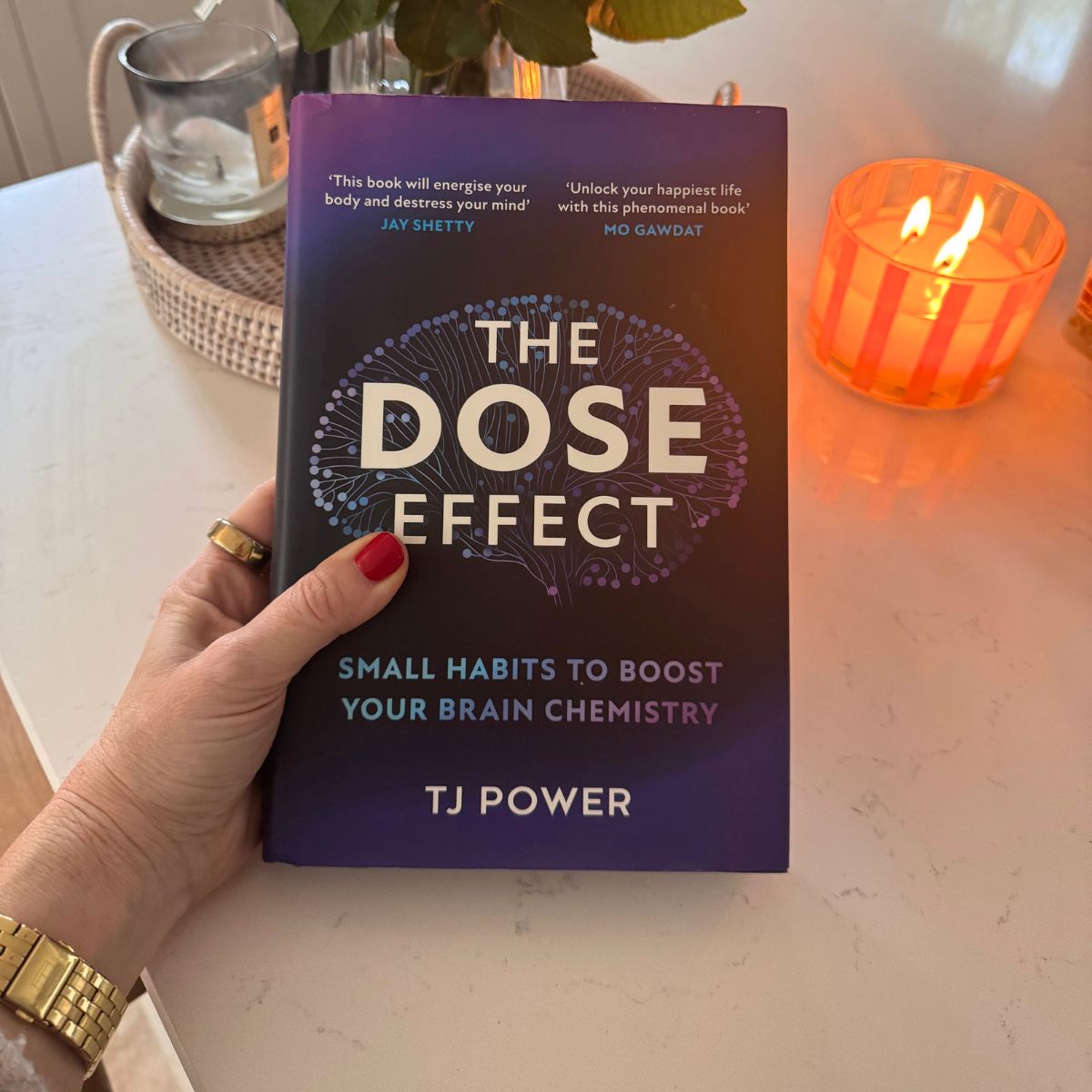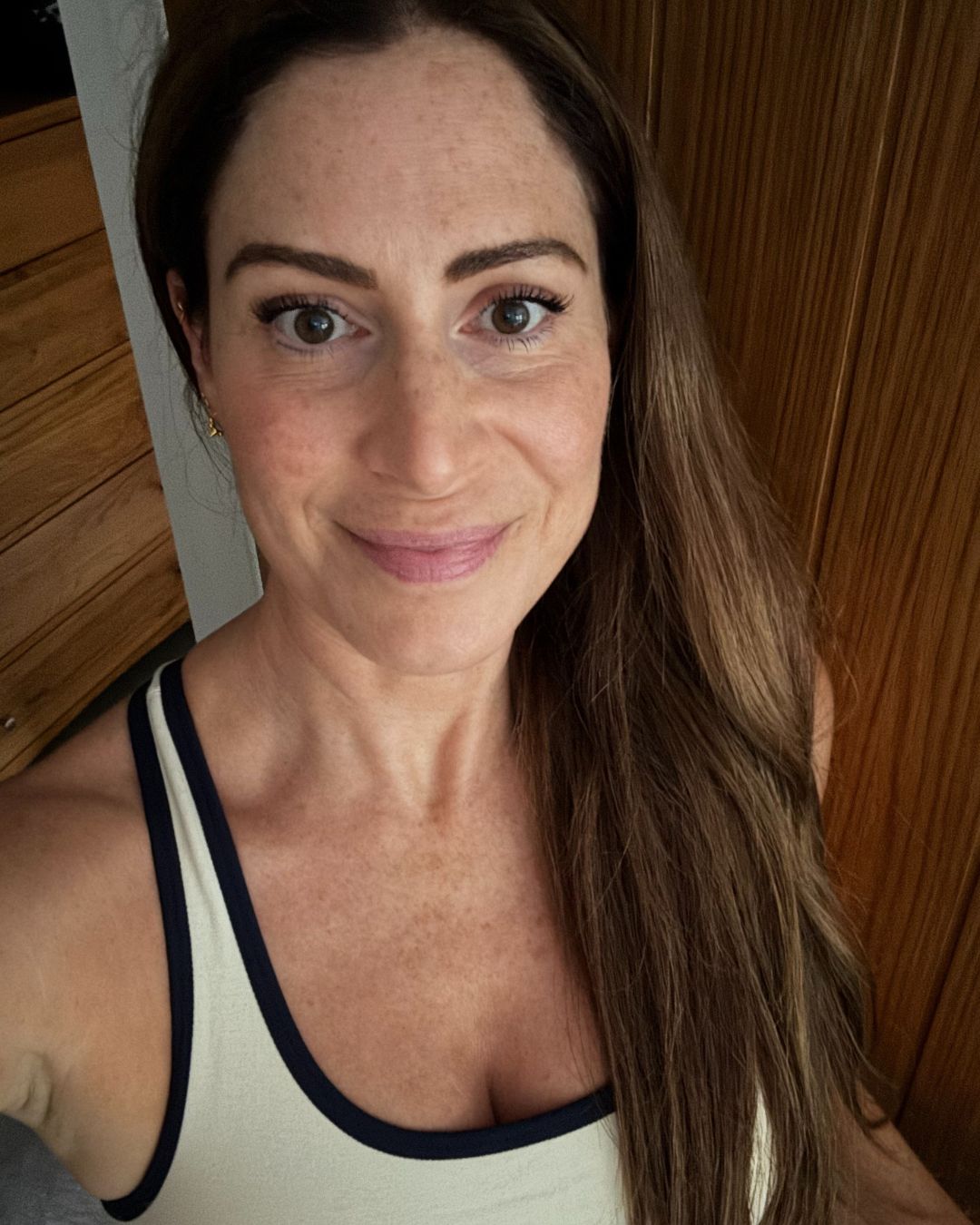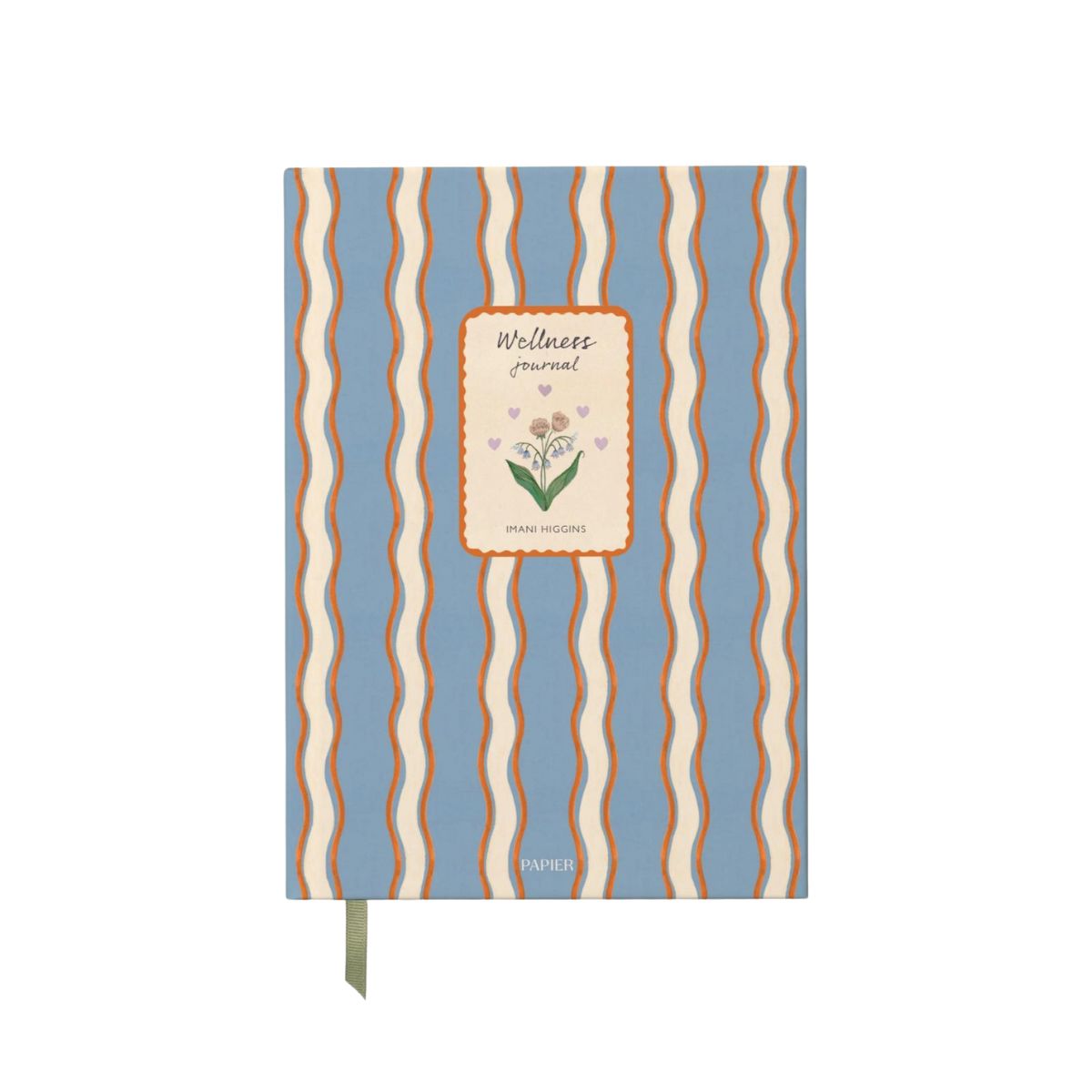I Tried the DOSE Method, Which Promises To Supercharge Focus and Self-Belief, for a Month – and I’m a Total Convert
Simple ways to boost brain chemistry? It's a yes from me.


I've struggled with focus, organisation and productivity for as long as I can remember. Thinking back to my early childhood, my brain felt chaotic and always 'on'; as I've grown up, I've managed to (just about!) hold the threads together well enough to function.
But throw something else into the mix - tiredness (always, I have three children), stress (again, the children!), hunger, hormones - and I can easily tip back into feelings of overwhelm, causing me to drop many a ball along the way. And the worst part? People may assume that my lackadaisical attitude makes me so go-with-the-flow that missing the occasional doctor's appointment or school meeting is no big deal.
Reader, I almost wish that were the case. Rather, in addition to having more than my fair share of scattiness, I also have a huge dose of perfectionism, meaning I'm constantly berating myself for not being good enough/organised enough/just enough.
So, when I read about the DOSE method - a neuroscience-backed concept designed to help us 'hack' the four key brain chemicals (dopamine, oxytocin, serotonin and endorphins) that are responsible for how we feel and behave - I was all in.
Would the method help me regain some control and calm? I couldn't wait to find out. It's important to note, at this point, that if you're struggling with mental health issues, you should contact your GP or other medical professional for help.
For more on what makes team MC UK tick, do check out how our Health Writers got on when they tried doodling for creative health, a week of TikTok's guided meditations, a neuroscientist's top productivity tips, and read all about my trial of the Pomodoro technique, here.
I tried the DOSE method for a month - here's what happened to my focus and self-belief
There are various iterations of the DOSE method on the market right now, but for the purposes of my trial, I used TJ Power's The Dose Effect book. And, full disclosure, there is some debate as to whether the method oversimplifies the complexities of how our brains work.
Celebrity news, beauty, fashion advice, and fascinating features, delivered straight to your inbox!
That being said, I was excited to dive in.
What is the DOSE method?
If you've never heard of the DOSE method before, listen up. The name is an acronym of the brain's four main chemicals (also known as neurotransmitters) that are responsible for how we think, behave and feel: namely, dopamine, oxytocin, serotonin and endorphin.
"The concept behind the DOSE method is all about demystifying brain chemistry, and helping us understand the different components that can help to boost our mood," explains Georgina Sturmer, counsellor and member of the British Association for Counselling and Psychotherapy. "The DOSE acronym brings together the key properties of Dopamine, Oxytocin, Serotonin and Endorphin, helping us to understand the role that these play in our everyday lives. But the method goes further than simply encouraging us to comprehend how we are wired. It helps us to understand simple and accessible ways in which we can boost these key components, in order to boost our mood in a sustainable and healthy way."
Here's a quick refresher on what each of these neurochemicals does.
1. Dopamine
"Dopamine is our motivation and reward messenger," shares mental health therapist Roxy Rhodes. "It's released when we anticipate or achieve something meaningful. It gives us the 'spark' to start tasks, pursue goals and feel satisfaction when we complete them; without it we feel flat or unmotivated, but with balanced levels we feel energised and purposeful."
2. Oxytocin
Also known as our 'love' hormone, oxytocin provides those warm, snuggly feelings of connection with our family and friends.
"Oxytocin is our bonding hormone, underpinning trust, empathy and social connection," says Rhodes. "It’s released through touch, eye contact, kindness and shared experiences. It reduces stress hormones and helps us feel safe and supported in relationships. Oxytocin is why skin-to-skin contact with a baby as soon as they’re born is so highly promoted."
3. Serotonin
"Serotonin serves as our mood stabiliser," notes Rhodes. "It helps us to regulate mood, sleep, appetite and memory, and it's linked with feelings of calm, contentment and self-confidence. Exposure to daylight, exercise and positive memories can help boost it naturally. Low serotonin is often linked to depression and low mood."
4. Endorphin
That runner's high you experience post-workout? That's your brain releasing feel-good endorphins.
"Endorphins are chemicals released in response to stress, exertion or pain," shares Rhodes. "Acting as the body’s natural painkillers, they blunt discomfort and produce feelings of pleasure or euphoria - like the “runner’s high” effect, or, for example, why people don't notice/care that they've hurt themselves playing sport until an hour or so afterwards. Laughter, exercise, music and even a good cry can all trigger the release of endorphins."
What are the benefits of following the DOSE method?
While there are lots of anecdotal benefits to the method, the experts are keen to stress that the DOSE protocol is not (and nor should it be) a replacement for seeking professional medical help.
"Like any wellbeing tool, DOSE isn’t a magic bullet," cautions Rhodes. "If someone is experiencing persistent depression, anxiety or trauma symptoms, then professional support is still crucial. The point is to complement treatment, not replace it, but to make it easy for people to do by themselves."
That said, the benefits are compelling: we're talking improved focus, increased resilience, better relationships and boosted mood.
How does the DOSE method work?
It's no secret that when we're feeling overwhelmed, it can seem impossible to find a way through. The DOSE method is all about taking small, actionable steps to prompt our neurotransmitters to kick in - and, crucially, it's a method that's accessible to everyone.
"The DOSE method works by helping to cultivate awareness of these naturally occurring brain chemicals," shares Keren Blackmore, certified coach and founder of Leap of Thought. "When we understand how to enhance them and what hinders their release, we can intentionally adopt small yet powerful habits that naturally elevate our wellbeing.
"It's all about noticing and building out micro practices or habits that support your overall wellbeing. The key is to make it relevant and useful to you, and go gently, rather than attempt a huge and immediate overhaul that is drastic and less likely to embed. Many of the shifts are small, incremental and will eventually become like second nature."
I tried the DOSE method for a month - here are my unfiltered thoughts
Weeks one and two
As day one of my DOSE method trial dawns, it quickly becomes clear that I've taken on way more than I expected - the book alone is a good 300 pages long, and there's a raft of tasks to be completed along the way. Gulp.
Undeterred, however, I set aside an hour on day one to sit down and work out where on earth to start. I thought this was supposed to be simple? But half an hour in, and I'm already coming to terms with the ideas, and my notepad is filling up nicely. Who knew I had so much to learn?
I decide to tackle one brain chemical each week of my challenge, so week one is dopamine's turn. Interestingly, while I only tick two of the six addictive dopamine behaviours (online shopping and social media, FYI), I definitely feel that this is where a lot of my issues lie, and I'm appalled to discover that I'm currently spending a whopping 90 hours each month on these pursuits.
Where to start? For me, it's simple: I need to upgrade the blocks on my phone. It's clear that I'm overriding the in-built time limits I've set for myself, so I'm in desperate need of something more robust. I choose an app that allows me to block all the places I go when I'm procrastinating/exhausted/bored, and after a couple of days, I notice that I'm picking up my phone way less. I'm also fascinated by the counter that tells me exactly how many times per day I'm turning to my phone (trust me when I say, nobody wants to see those figures!)
By the end of the week, I feel like I've won some time back. I manage to watch a TV series in full (something I've been struggling to do recently, double-screening the moment there's a break in action), and I've even had a couple of early nights - unheard of for me. Not only this, but I've instigated a no phones rule before 9 am, and cracked down on my tendency to reach for my device during mealtimes, too - something that's absolutely benefitted both my eating habits (it's much easier to slow down and eat mindfully when you're not scrolling) and my connections with family, as we're (forced to ) talking to each other more.
By the end of week one, I think my husband is bored of me quoting the book at him (but did you know that your first source of dopamine each day is where your brain will automatically seek it out for the whole rest of that day? So interesting!) but I'm already noticing some behaviour changes, which I'm surprised have kicked in so fast.
So far, so good, and I start week two (oxytocin) with a renewed sense of enthusiasm and openness to learning more about myself. And initially, I'm confident that oxytocin and I get along well: I'm happily married, have three wonderful children who bring me so much joy, and I'm fortunate enough to have amazing, solid friendships, some of which I've had since childhood.
And while these are valuable sources of oxytocin, it soon becomes clear that there's a key area I am lacking: self-criticism. That's right, oxytocin isn't just released in response to our interactions with others, but also when we're kind to ourselves. Critical self-talk is detrimental to oxytocin levels, so it's time to address this - and I know it's going to be easier said than done.
As luck would have it, I have the perfect opportunity to practice building my social confidence, as we're hosting a party (something I never do, as it causes me way too much anxiety!) And although I do panic about pretty much everything that night and the following day, I follow the steps set out: acceptance (everyone feels a degree of social awkwardness at times), standing tall (you have as much right to take up space as anyone else) and finally, listening and contributing.
As the week draws to a close, I do feel more at ease with myself, and it's made me realise that, however painful a social interaction may feel, other people really aren't focused on me - they're too busy worrying about themselves.

Anna set aside an hour on day one to sit down and work out where to start - and, half an hour in, she was already coming to terms with the ideas.
Weeks three and four
As week three rolls around, I can't believe how much I've learned already - I'm excited to get cracking on serotonin and endorphins.
Week three is all about serotonin, our mood-stabilising hormone. I'm already well-acquainted with the ideas of connecting with nature, early morning sunlight, good quality sleep and a healthy diet (90% of our serotonin is produced in the gut, so there's a powerful mind-body connection here). But knowing these things and putting them into action are two very different things, and I've long been aware that I could benefit from more time outside and better sleep hygiene, so it's these pillars of health I choose to focus on this week.
And I've got the small changes I've made during the month so far to thank for these challenges being easier than anticipated. No longer quite so tied to my phone, I leave it behind when I head out on my daily dog walk, and try to focus instead on my breath and clearing my ever-frazzled mind. This is a double win: I'm not only spending time in nature, but I'm really soaking up the changes in the seasons (who doesn't love autumn?) that I'd usually be too engrossed to notice.
As for my sleep, those phone app blocks are amazing. Not being able to mindlessly scroll for hours in the evening leaves me not only more time to go to bed early, but also allows me to start clearing my head with a nightly to-do list. Call it a coincidence, but I definitely think that popping all the next day's tasks down on paper before heading up to bed enables me to drift off that little bit more easily.
Finally, week four arrives, and with it, time to work on endorphins. Being a fitness fan is going to pay off: I'm confident this week will be easy. But reading more about endorphins forces me to face up to a startling fact: maybe regular exercise isn't enough for me. One of the signs of low endorphins is feeling stressed, and (according to my Oura ring) I spend four out of seven days this week in complete stress, with no time in the restored zone at all.
This is a stark wake-up call for me, and it's not the first time it's been flagged as an issue, either. Last year, I underwent a raft of health tests (my job as a health and fitness writer allows me access to some of the most cutting-edge tests on the market), and every single one noted that I'm overly stressed.
It's time to knuckle down and make some changes. Luckily, the ideas in the book sound amazing - more hot baths? Yes, please! While we know that a relaxing soak isn't the answer to all life's stresses, it certainly helps to ease some of my cares.
By the end of the month, I absolutely feel that I've made some sustainable and helpful changes in my behaviour. Of course, there have been times (whole days, if I'm honest!) when I've slipped into old habits, but it's important to remember that the goal here is progress over perfection. It's also good to note that I realise I'm in an incredibly privileged position in the first place, having a healthy body, a supportive family and access to the tools that I know can make me feel like a calmer, more capable version of myself.
That being said, the month wasn't without its challenges. Being deep in perimenopause throws some curveballs that I have to work hard to tackle, and not allow them to throw me off course. But, armed with my fresh knowledge and tools, I'm confident that I'm in a good place to tackle most of what life is throwing me right now.

By the end of the month, Anna had made some sustainable and helpful changes to her routine
Shop MC UK's go-to wellbeing essentials now:
How can I stay consistent with the DOSE method?
If you're anything like me, once that initial surge of excitement and energy dissipates, it can be tough to stick to those new habits. So, how can we ensure we stay consistent with the DOSE method?
"You don't have to do everything all at once or be extreme in how you approach boosting your DOSE chemicals," cautions Blackmore. "Go gently, and find ways to slowly improve how you take these steps on board. Don't expect a huge or dramatic change immediately; this leads to giving up. It's a slow burn, but so worth it.
"A great way to track your progress is to try journaling, or, if this feels like too much, even just make a mental note (perhaps as you're drifting off to sleep) of the small choices you have made that you're proud of, that will have boosted your DOSE chemicals.
"Last but not least, don't 'should' or shame yourself. It's not helpful, kind, or likely to support long-term change. Be gentle and kind; try new habits slowly and gradually because you can, not because you have to. Approaching it from a compassionate place as opposed to a harsh and punishing lens is not only a nicer experience, but it's more likely to last, too."

Anna Bartter is a freelance journalist who writes about health, fitness and women's lifestyle for publications including Stylist, Metro and Psychologies, among others.
She's always on a quest to find a variety of fun and functional workouts that give you the most bang for your workout buck and she's passionate about championing movement for everyone's mental and physical wellbeing.


